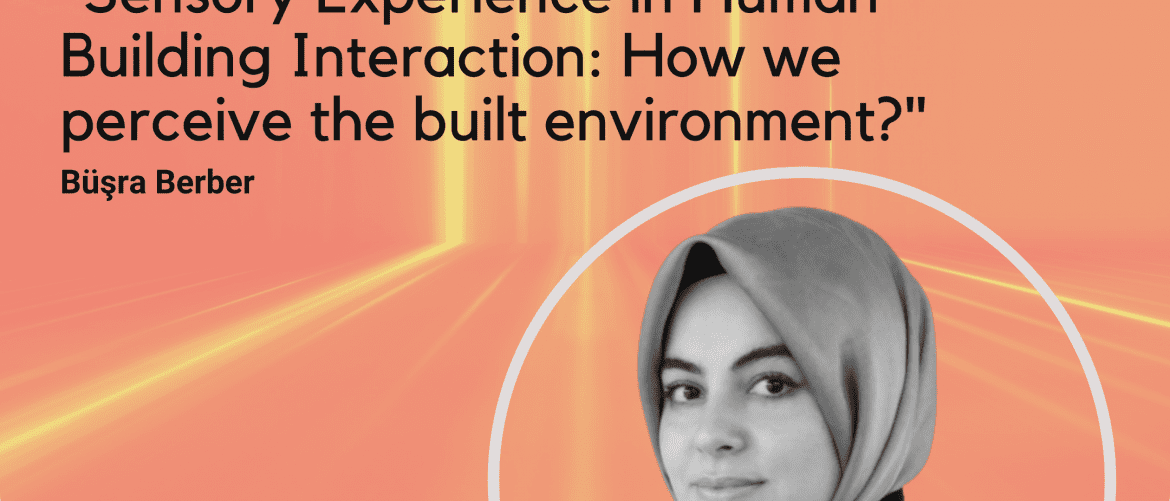“Architecture is the art of reconciliation between ourselves and the world, and this mediation takes place through the senses” [Juhani Pallasmaa,1996]
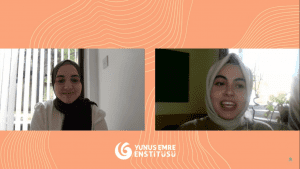 Some 20 years after these lines were uttered by the Finnish architect, artist Refik Anadol draws attention to the importance and interlinking use of senses, space, and technology in his “Machine Memoirs: Space” public art exhibition in Istanbul’s Pilevneli Gallery. Anadol’s new imaginative world not only captured the attention of millions but stoked the intellectual flames of architect Büşra Berber, the speaker of the latest talk of the Young Scholar Seminar Series hosted by the Yunus Emre Institute in London.
Some 20 years after these lines were uttered by the Finnish architect, artist Refik Anadol draws attention to the importance and interlinking use of senses, space, and technology in his “Machine Memoirs: Space” public art exhibition in Istanbul’s Pilevneli Gallery. Anadol’s new imaginative world not only captured the attention of millions but stoked the intellectual flames of architect Büşra Berber, the speaker of the latest talk of the Young Scholar Seminar Series hosted by the Yunus Emre Institute in London.
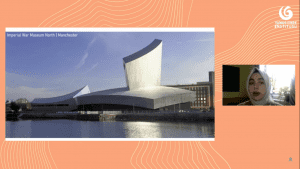 Discussing the “Sensory Experience in Human Building Interaction”, Büşra’s fascinating talk explored the importance of designing for senses beyond sight. Including scent, sound, taste and tactile feeling, there is more to modern architecture than meets the eye. In this vein, museums and galleries will be more than hubs for social activities, learning and community. Museum journeys that combine multiple-layers of experience such as sensory, emotional, cognitive, aesthetic and social will immerse you in different environments and experiences that can allow for healing, contemplation and connection.
Discussing the “Sensory Experience in Human Building Interaction”, Büşra’s fascinating talk explored the importance of designing for senses beyond sight. Including scent, sound, taste and tactile feeling, there is more to modern architecture than meets the eye. In this vein, museums and galleries will be more than hubs for social activities, learning and community. Museum journeys that combine multiple-layers of experience such as sensory, emotional, cognitive, aesthetic and social will immerse you in different environments and experiences that can allow for healing, contemplation and connection.
Human-Building Interaction (HBI) is the study of the bridges between a building’s users, physical space and the objects within it. Focusing on museum and gallery environments, Berber presented a new approach to architecture. Through weaving threads from her personal experience and academic investigations, Berber masterfully presented her research on how our senses interact with buildings and spaces around us, creating a museum-like walkthrough of her findings.
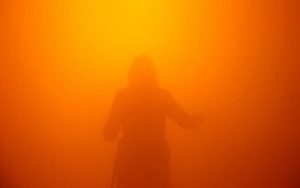
Referring to the 2019 “Olafur Eliasson: In real life” exhibition at Tate Modern, for example, she presented how architecture could at times be invisible. The unforgettable immersive experience demonstrated that the use of different senses could completely change the present environment. In one instance, unable to see a foot ahead of you due to the fog and light, you felt as if you were within a space without boundaries and direction. In another, water and light were used to distort your senses to feel like you were within a different boundless space.
Museum and gallery environments such as this exhibition are increasingly adopting digital technologies to increase visitor interaction and engagement. During the talk, Berber pointed to her research combining elements of architecture, computer science, museology and media studies to investigate these new digital technologies which create immersive, sensorial and whole-body experiences. With her research aiming to understand how visitors perceive and interact with different sensory environments, Berber discussed what sensory experiences are in relations to her work, how they are mapped, and how they can be used in architecture. Berber achieved this by analysing data relating to cognitive and physiological responses, as a way to identify new tools and methods in the design of sensory environments.
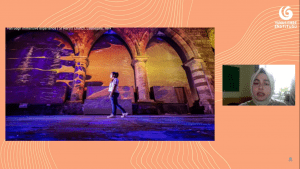 Exhibitions such as “Olafur Eliasson: In real life” merely use light, fog, water, sound to create immersive and impactful spaces. When such human-space interactions are considered in architecture, this talk delved into the contemporary understandings of what senses should be considered and used in architecture. This new approach blurred the boundaries of architecture with creative fog to extend the horizons of architecture beyond what initially meets the eye.
Exhibitions such as “Olafur Eliasson: In real life” merely use light, fog, water, sound to create immersive and impactful spaces. When such human-space interactions are considered in architecture, this talk delved into the contemporary understandings of what senses should be considered and used in architecture. This new approach blurred the boundaries of architecture with creative fog to extend the horizons of architecture beyond what initially meets the eye.
About the speaker, Büşra Berber:
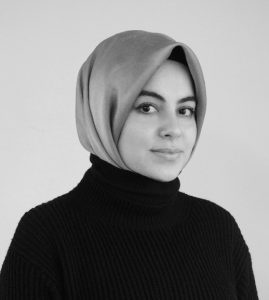 An architect and researcher, Berber graduated with a distinction in MA Architecture and Urbanism from the University of Manchester. She has worked as a research assistant at architectural practices and is presently a researcher in the Architectural Space and Computation MPhil/PhD programme at The Bartlett School of Architecture, UCL. She is researching sensory effect of the building and mediative space intersection with a deep architectural passion. Berber is also a UCL Sustainability Ambassador working in collaboration with Camden Council.
An architect and researcher, Berber graduated with a distinction in MA Architecture and Urbanism from the University of Manchester. She has worked as a research assistant at architectural practices and is presently a researcher in the Architectural Space and Computation MPhil/PhD programme at The Bartlett School of Architecture, UCL. She is researching sensory effect of the building and mediative space intersection with a deep architectural passion. Berber is also a UCL Sustainability Ambassador working in collaboration with Camden Council.
This talk forms part of the Young Scholar Seminar Series organised by Yunus Emre Institute in London.
About the ‘Young Scholar Seminar’ series:
Established in 2017, the Young Scholar Seminar Series is a platform giving postgraduate students the opportunity to present their research to the wider public and encourage the exchange of knowledge. In particular, the series have been designed to promote the academic achievements of young academics, increase their visibility, and facilitate networking opportunities. Yunus Emre Institute in London invites young academics from all disciplines with research into global or Turkey-related topics to present their findings and become part of the institute’s growing young academic network.
To view more Young Scholar Seminars, please visit the Yunus Emre Institute in London YouTube channel.

